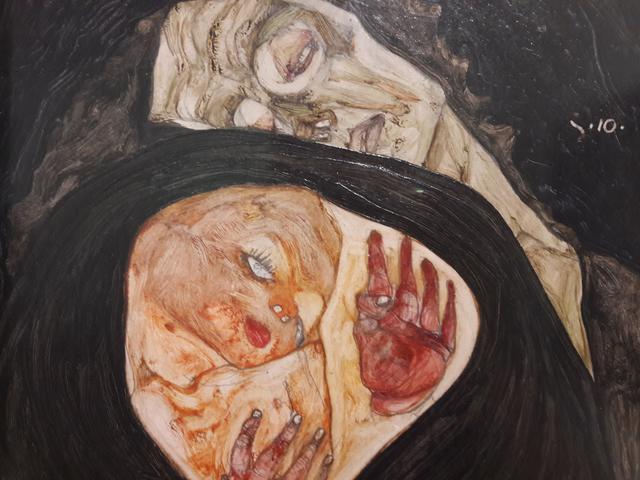dead mother

"Dead Mother" is a haunting and emotionally charged painting by the renowned Austrian artist Egon Schiele, who was a prominent figure in the expressionist movement. The painting, created in 1910, is a powerful representation of the artist's personal struggles and traumas, reflecting his deep psychological and emotional turmoil. Schiele's use of bold lines and intense colors conveys a sense of raw emotion and inner turmoil, making "Dead Mother" a truly captivating and thought-provoking work of art.
The painting is believed to be a symbolic exploration of Schiele's complex relationship with his mother, who played a significant role in his life. The tragic losses that Schiele experienced at a young age, including the death of his older sister and father, as well as the stillborn siblings, undoubtedly had a profound impact on his psyche and artistic expression. The eerie and unsettling imagery in "Dead Mother" reflects Schiele's deep-seated emotions and inner conflicts, offering viewers a glimpse into the artist's troubled mind.
As visitors explore the depths of Schiele's psyche through "Dead Mother," they are invited to contemplate the themes of loss, grief, and familial relationships that permeate the painting. The influence of psychoanalysis, particularly the work of Sigmund Freud, is evident in Schiele's exploration of the subconscious mind and the complexities of human emotions. Through his expressive brushwork and evocative imagery, Schiele invites viewers to delve into the darker corners of the human experience, confronting the complexities of life and death.
In the context of Vienna's rich cultural heritage, "Dead Mother" stands out as a poignant and introspective work of art that continues to resonate with audiences today. As tourists explore the city's museums and galleries, they are encouraged to engage with Schiele's profound artistic vision and delve into the depths of his emotional and psychological landscape. "Dead Mother" serves as a powerful reminder of the enduring power of art to provoke thought, evoke emotion, and inspire contemplation on the complexities of the human experience.
© ChatGPT 3.5